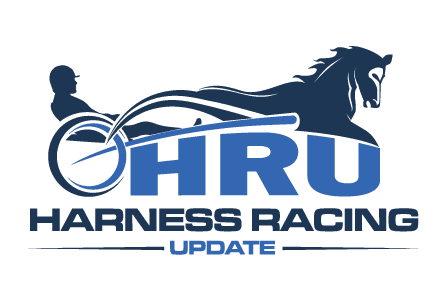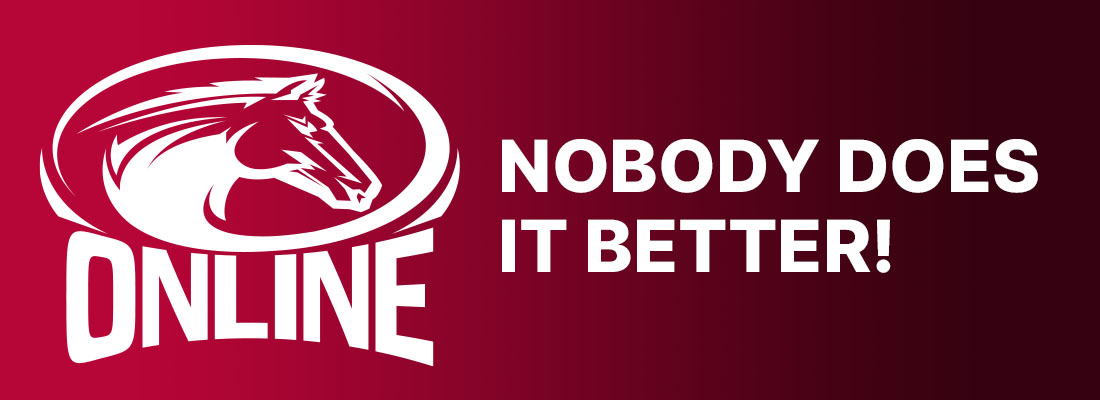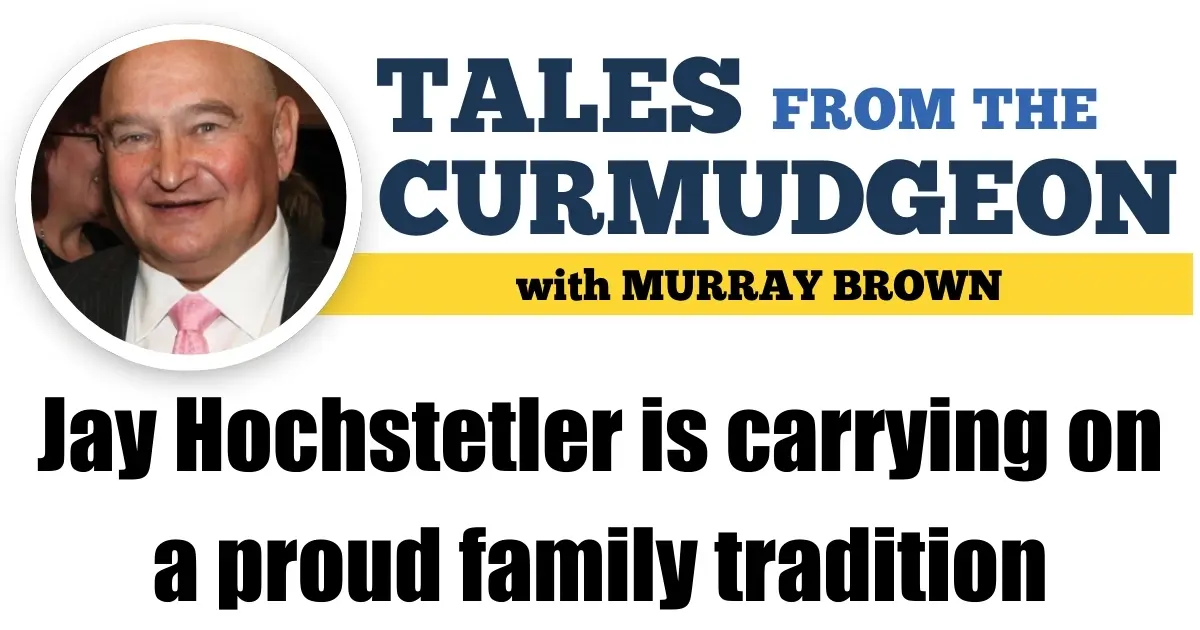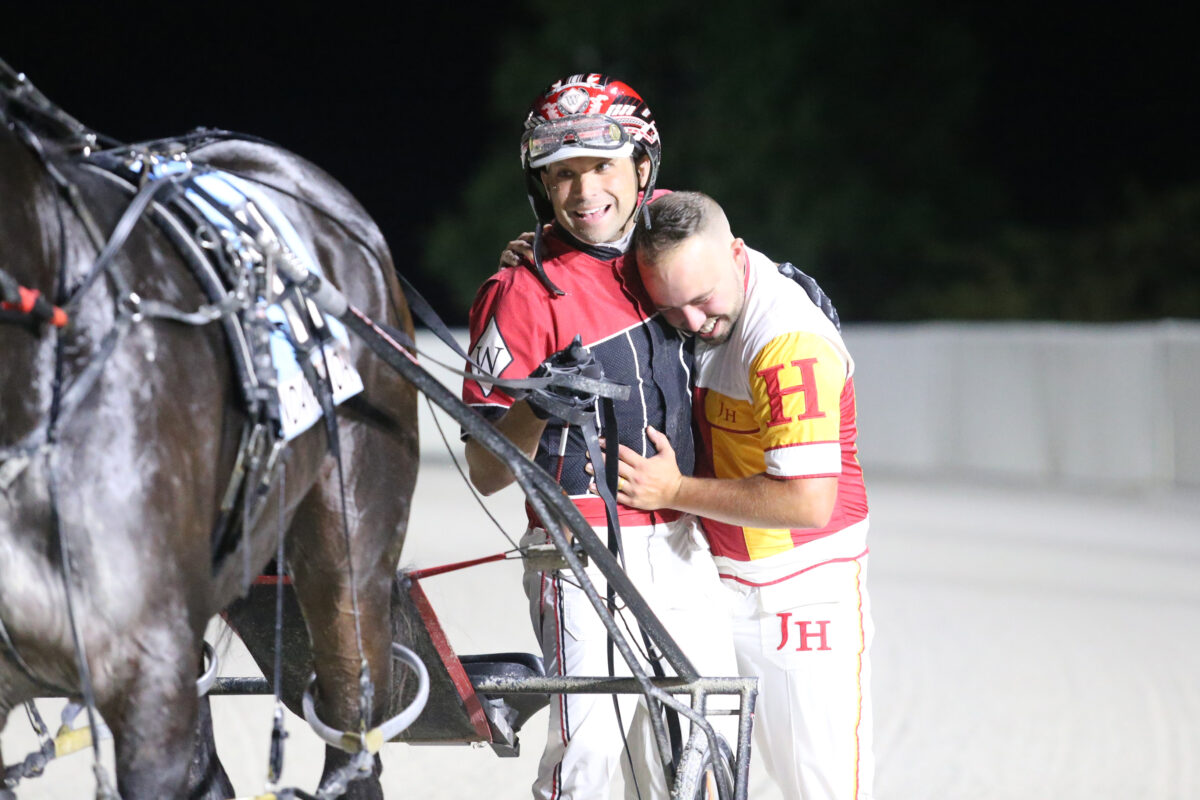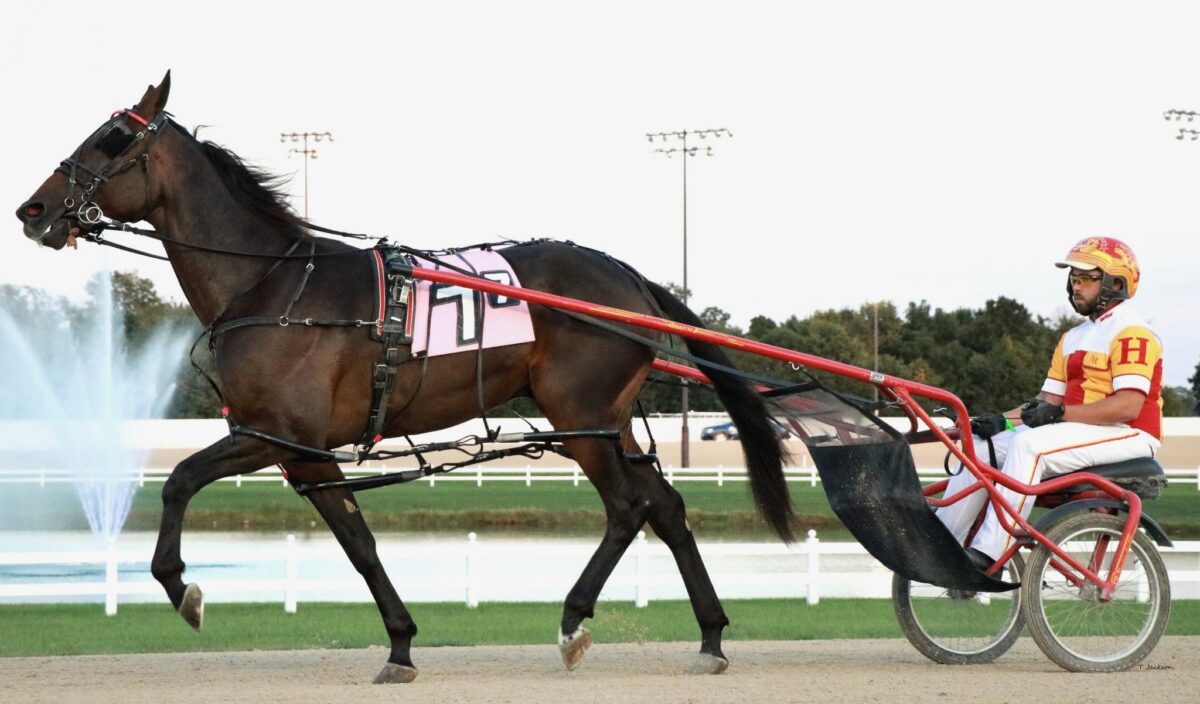Jay Hochstetler is carrying on a proud family tradition
by Murray Brown
One morning last week, I received a post regarding a possible broodmare prospect. The sender cited several positive factors including gait, speed, courage and demeanor which certainly boded well towards the chances of her becoming a productive broodmare. She comes from a Down Under family with which I am not familiar, so I made no comment on her pedigree.
My response to the sender was that all the positive traits that he mentioned were certainly nice to have. However, I mentioned something that my long association with John Simpson taught me. Mr. Simpson said that the two greatest horses that he trained and raced were the pacer Bullet Hanover and the trotter Ayres. He also trained their respective dams Barbara Direct and Arpege.
Neither Barbara Direct nor Arpege had all the plus factors that the mare in question has. To quote Mr. Simpson “They each had hearts the size of a pepper seed.” Barbara Direct did have some speed, but she was decidedly lacking in courage. Arpege had neither speed nor courage. But the one thing that both mares possessed was pedigree – lots of it.
I’m not about to suggest that there are no great producing mares that lacked top bloodlines or the opposite of that not being so. There are mares with the greatest bloodlines who have not met expectations as top matrons. There are far more ordinary mares who turned out to become ordinary producers. However, if you were to ask me what might be the number one attribute I would look for in a broodmare, number one would be pedigree, followed by pedigree and then more pedigree.
All this preamble does not bring me to a discussion of broodmares, or even horses, but it does concern pedigree — that of the human variety. Jay Hochstetler possesses a background in harness racing pedigree that would be hard to match. Both his parents, his father Homer and his mother Connie (nee Ackerman) are lifelong horsepeople. His uncle Doug R. is a noted horseman with many Grand Circuit victories as a trainer, driver and owner. His grandfather Doug is a Hall of Fame trainer, driver and owner. Moreover, sometimes lost when discussing the Ackerman tribe, is his great uncle Jack Ackerman who many who knew him describe as an exceptional horseman. The cherry on the sundae is that Jay’s wife, Amy, is the daughter of well-known race secretary Doc Narotsky and has a darn good resume of her own as a veterinarian, specializing with horses, although of the thoroughbred variety.
With that kind of background how could Jay Hochstetler have become anything but a horseman?
When did you decide that you wanted to become a horseman?
“It took me quite a while to decide I wanted to be horseman. With my family, I was always around the horses, but I focused much harder on sports and school. Still, my mom had me at the races at Hawthorne when I was just a few days old. I was always around the races and barn, but my parents believed it was paramount I receive a college education as did I.
“I attended the University of Kentucky and received a bachelor’s degree in Equine Management and Agricultural Economics. I originally intended to get a degree in Economics, but midway through college I realized I wanted to stay in the horse business so I switched my major. I was very successful in my economics classes but I did not particularly enjoy it. That’s the nice thing about racing horses; it is hard work but if it is your passion, like it is mine, it never truly feels like work because I love the sport and the animal so much.”
Let’s begin with your parents.
“I’ve been blessed in that regard. Both my mom and dad have been great role models. However, neither of them imposed their desires on me. Dad is the type of man who is always available when needed, but someone who prefers that I learn by experience and by making my own way. Given his preference, I think he would and has preferred that I figure things out myself rather than rely on him to do it for me. Mom has a wealth of experience in the business. Like me, she was born into it. Both of them have been significant factors in my growth in the sport, dad, more related to the hands-on experience training a horse and mom when it relates to the business aspects of operating a stable, especially with regard to organization, staking, and entering horses. She also truly made me into the man I am. She sacrificed so much time and effort when I was a kid to let me pursue any sports team I wanted since dad was busy with the stable.”
Your grandfather Doug was what most might call a horseman’s horseman. There is nothing he wouldn’t or couldn’t accomplish. He was a driver, trainer, owner and even an accomplished breeder through the feats of his great mare Albaquel.
“As most people would testify, he was a great horseman, but he was twice the man that he was a horseman which is truly saying something. Of his many attributes, the one that stands out for me was his kindly nature. Some of my fondest memories relate to training together with him in the summers when I was just learning how to really be a trainer. If I have any regrets, it’s that the time I spent with him was too short. I would give anything to pick his brain every day now.”
You spent most of your formative years in the business at the Chicago tracks where your dad had a successful stable. What ensued from there?
“Losing Sportsman’s, Balmoral, and Maywood was a great tragedy for the sport. Illinois racing produced so many great trainers and horses over the years, and the Chicago market is such a huge market to not have a constant presence in. I feel really blessed that I was able to basically grow up on the backside of Balmoral Park. It was an incredible racetrack to be a kid at and then learn to be a horseman later on. We stayed as long as we could in Illinois and had great success there, but eventually my father had to make the choice to focus more on the East Coast particularly New York.”
From Illinois, the stable moved to Vernon Downs for a few years.
“Vernon was a great facility to train horses at and presented us with some good racing opportunities. But we never felt as grounded there as we had in Illinois. The purses at Vernon made it difficult to keep a racing stable so to make a decent living you had to travel the New York Sires Stakes route. It is really tough on the horse, human, and pocketbook to do the nonstop trucking that the NY circuit requires especially for a smaller stable. While there I learned a lot though. We were stabled right across from George Ducharme, who I consider a good friend and a great horseman that I was fortunate to watch and learn from. We only spent the racing season in Vernon which is nice because I would not want to handle the winter there. We were still able to spend the off season in Pinehurst. If there is a place anywhere which is more hospitable to horses and horsemen than Pinehurst, I’ve yet to experience it. Pinehurst is a place where I think I’d still live even if I weren’t racing horses.”
You now race nearly exclusively at Hoosier Park in Indiana. What brought you there?
“It was a bit of a combination. I made the move to Hoosier Park in 2020. The last few years we were at Balmoral Park, my dad would race horses at Hoosier and had a few Indiana-breds so we had some experience there, and we had a few 2- and 3-year-old Indiana-breds at that time so I had a reason to go there and the draw not having to ship to race at all was appealing for me. Also, my wife had just taken her first internship out of Vet School at Hagyard in Lexington so it allowed me to be closer to her, and we knew she would have some good job opportunities after that in Indiana so we could settle down together. “Luckily, it has all worked out excellently. She accepted a job with Hoosier Equine providing care for the thoroughbreds at Horseshoe Indianapolis after her internship, and the Indiana racing program has been a blessing for me. I was lucky enough to purchase Ponda Warrior in the fall of 2020 at the Hoosier Classic. I knew his pedigree well since my dad raced his mother Sweetnsinful on the New York circuit and I took care of her for a while. He has made my partners and I close to three-quarters-of-a-million dollars since then, and we have had some great luck with Indiana-breds every year after him.”
Let’s talk about your favorite horse, Kadabra. Did you have any inkling that he would turn out to be as good as he was both on the racetrack and in the breeding shed?
“You are speaking with a true believer considering I named him and was listed as owner on him. I was young and, of course, biased, but I thought he was the greatest horse ever. I’ll never forget when he dead heated in the American National at Balmoral Park. I was only 8 years old but I was so disappointed because I was used to seeing him win every race. Although it was still a win, my child-self looked at it as a loss, and you can actually see me crying in the winner’s circle photo. My parents sold him for $800,000. I understood that he had to do it. That’s a ton of money especially in the early 2000s and it was life changing for my family. I told some of the folks that bought him that was the greatest bargain that they had ever secured. Of course, I was young and he was my first great hero. Later on, when I was teenager, I saw them at The Red Mile and they agreed that he was a bargain. I know that there were people that faulted his non-commercial pedigree. I didn’t care. I was certain that he would become a great stallion. My grandfather Doug also felt that he would be good in the stud barn. He said that he was loaded with Stars Pride blood, something he wanted to see in a trotter.”
